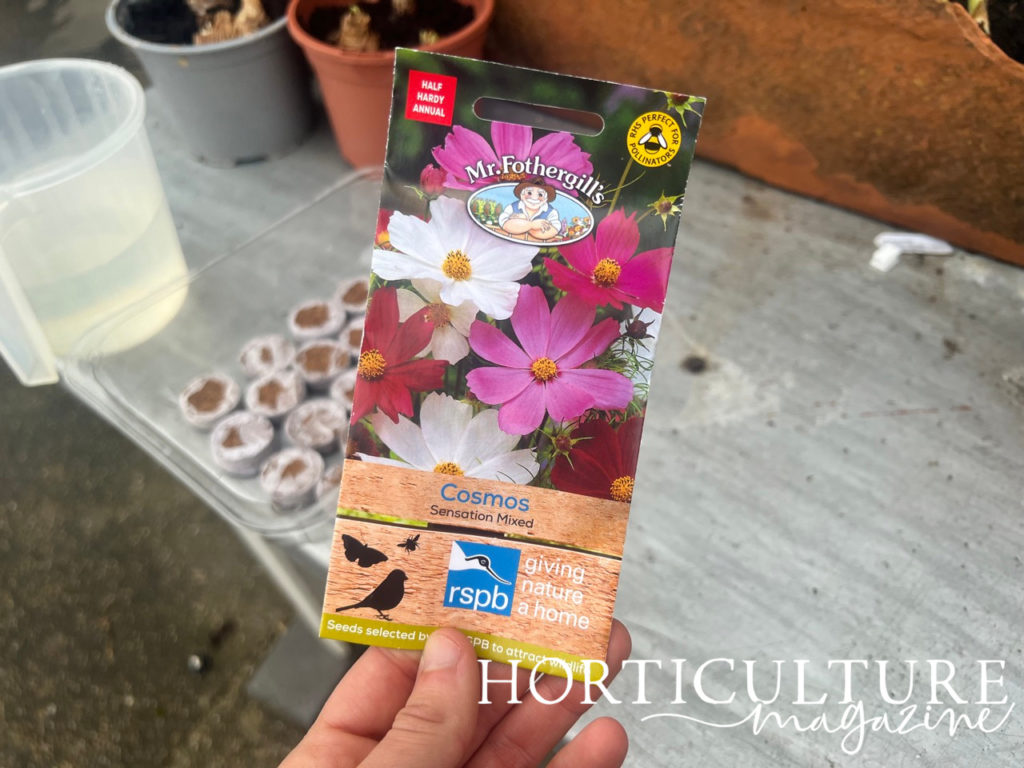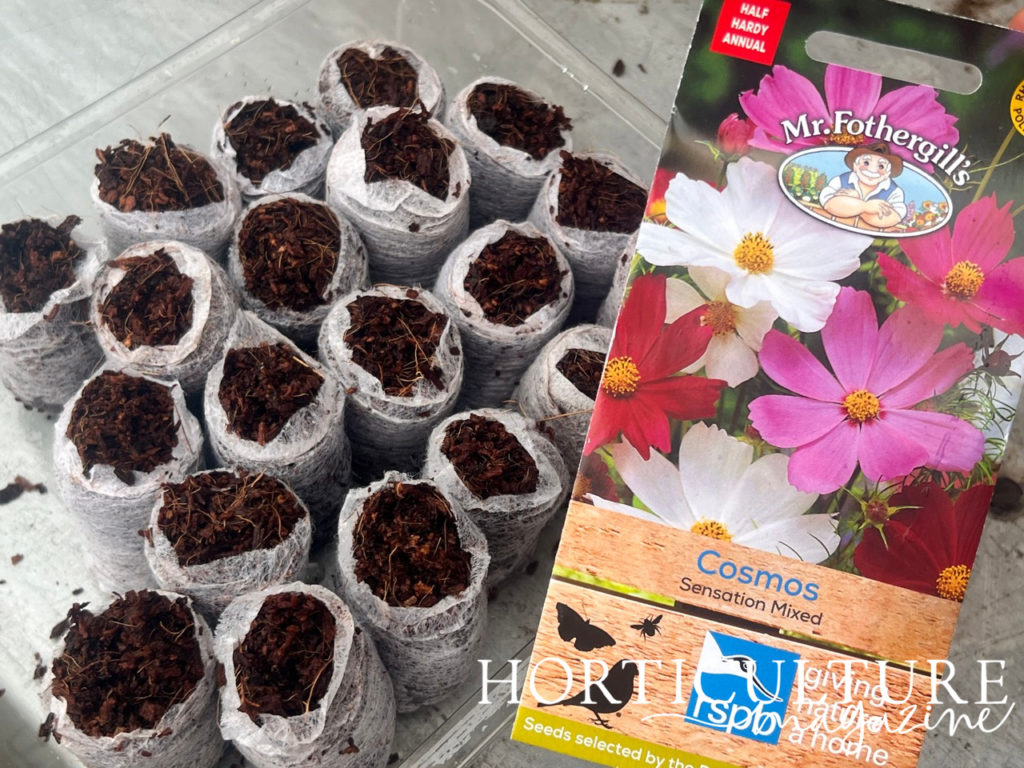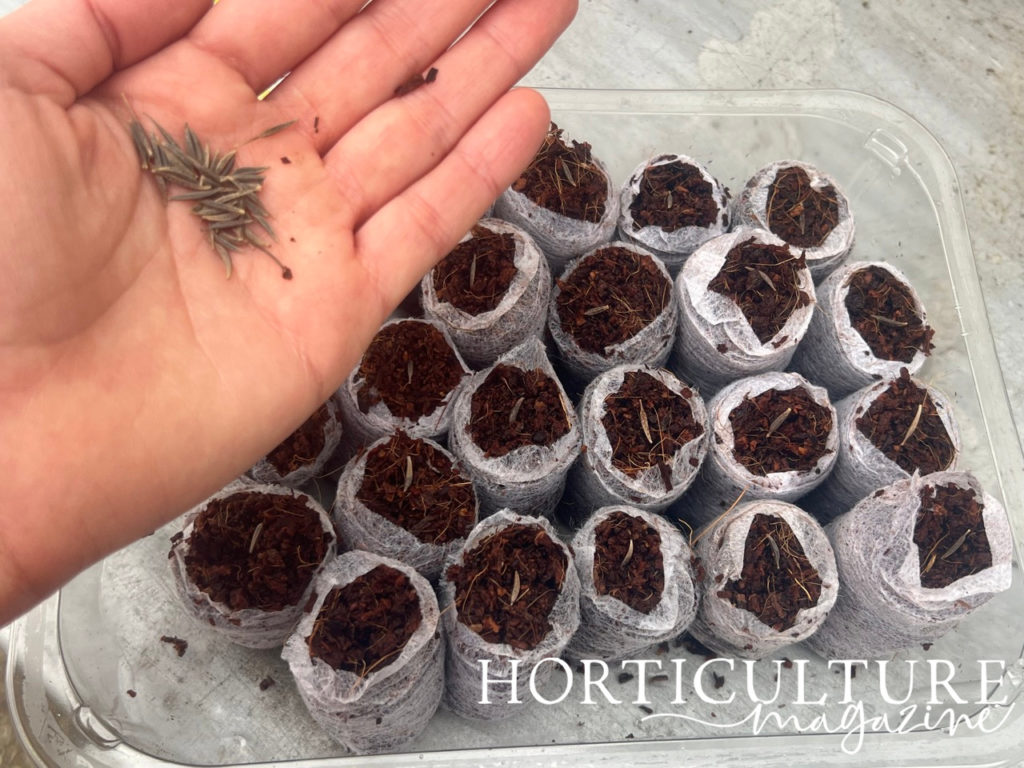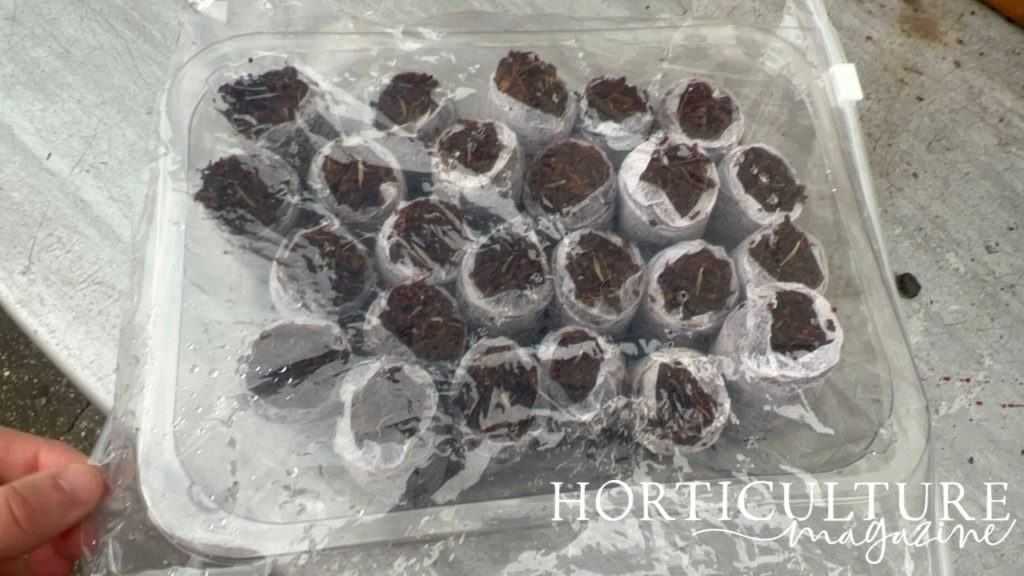Emily Cupit’s Trusted 5 Step Process For Sowing Cosmos Seeds Each Year


Elizabeth is a Permaculture Garden Designer, Sustainability Consultant and Professional Writer, working as an advocate for positive change. She graduated from the University of St. Andrews with an MA in English and Philosophy and obtained a Diploma in Applied Permaculture Design from the Permaculture Association.
Reviewed By ROY NICOL

Roy is a Professional Gardener and Horticultural Consultant, specialising in large garden year-round maintenance and garden development. He is an RHS Master of Horticulture and uses his research in the application of no-dig methods in ornamental garden settings. Roy has been a Professional Gardener for more than six years and is a member of the Chartered Institute of Horticulture, Professional Gardener's Guild and Association of Professional Landscapers (Professional Gardener).
Contributions From EMILY CUPIT

Emily is a Gardening Writer, Photographer and Videographer from Derbyshire, UK. She is the Founder of Emily's Green Diary - a community of more than 75,000 people who share in her gardening journey.
IN THIS GUIDE
COSMOS GUIDES
Cosmos are herbaceous flowering plants that belong to a Mexico-native genus.
The most common cosmos to grow in British gardens is C. bipinnatus, also known as cosmea or garden cosmos.
This is a half-hardy annual tolerating light frosts with daisy-like blooms in a range of hues that is, luckily, relatively easy to grow from seed.
To grow cosmos from seed:
- Choose which cosmos you will grow and source or collect the seeds.
- Decide where to grow your cosmos – and if you’d like to grow indoors before transplanting or grow them directly outdoors.
- Sow seeds outdoors between March and May – or potentially even earlier if you are growing indoors.
- If you have sown your seeds indoors, prick out and pot on your seedlings.
- Harden off and plant out your cosmos seedings after the risk of frost has passed.
Read on for a more detailed description of the steps above.
| Difficulty | Easy |
| Equipment Required | Seeds, seed trays or pots, growing medium |
| When To Sow | March to May |
| When To Plant Out | April to May |
1) Source Or Collect Your Seeds
First of all, you should decide which cosmos variety you would like to grow.
You can choose from lots of named varietals.

When you are trying to decide which cosmos you would like, you should, of course, think about the colour and form of the blooms.
However, you should also consider how tall the variety will grow, since some grow much taller than others.
Many cosmos are compact and grow to only around 30cm in height, while others can grow to around 1m.

Cosmos seeds are widely available online and in garden centres.
If you or someone you know has some attractive cosmos, you might also be able to save seeds from those plants to sow the following year.
2) Decide Where To Grow Your Cosmos
Cosmos are a useful and versatile flower that can be grown in a range of settings.
They will do well in moist but free-draining soil.

It is best to grow them in full sun, though they do not mind too much about the soil pH or about exposure.
Cosmos can work well in many beds and borders and can be a great addition to a prairie scheme or cottage garden.

You might also consider growing cosmos as a companion plant in your annual kitchen garden, as many varieties are great for drawing in bees and other pollinators.
3) Sow The Seeds
Sow your cosmos seeds in spring.
They can either be sown indoors in March or April or they can be sown outdoors once the last frost date has passed where you live.

If you are sowing indoors, which is generally the better option here to protect from pests like slugs, place the seeds on top of your seed tray or pots that are filled with suitable seed compost.
Cover them over with a little layer of the medium.
For best germination, keep temperatures at around 16°C.
An indoor propagator can be handy, though a simple zip-lock bag can also be used to help keep seedlings warm and humidity high.

If you’d prefer to directly sow your seeds outdoors, you can sow thinly in rows or broadcast cosmos seeds into a prepared bed in a suitable location.
4) Prick Out & Pot On If Required
If you have sown the cosmos seeds outdoors, then you simply have to wait and care for your cosmos as they grow.

If you’ve sown cosmos seeds inside, then you should prick out the seedlings from their seed trays or pots once they are big enough to deal with and pot them on.
5) Harden Off & Plant Out
Then, once there is no longer any risk of frost where you live, you can harden off your cosmos, slowly acclimatising them to the outdoor conditions, before you plant them out into their final growing positions.
“As the plants grow, pinching out the growing shoots after three or four pairs of leaves have formed, helps to create bushier plants with more flowers,” shares Roy Nicol, a Master Horticulturist.
Once you have your cosmos in a suitable location in your garden, they may well self-seed, so you can enjoy these flowers in your garden over a number of years and won’t necessarily have to start from scratch and sow new seeds each spring.
